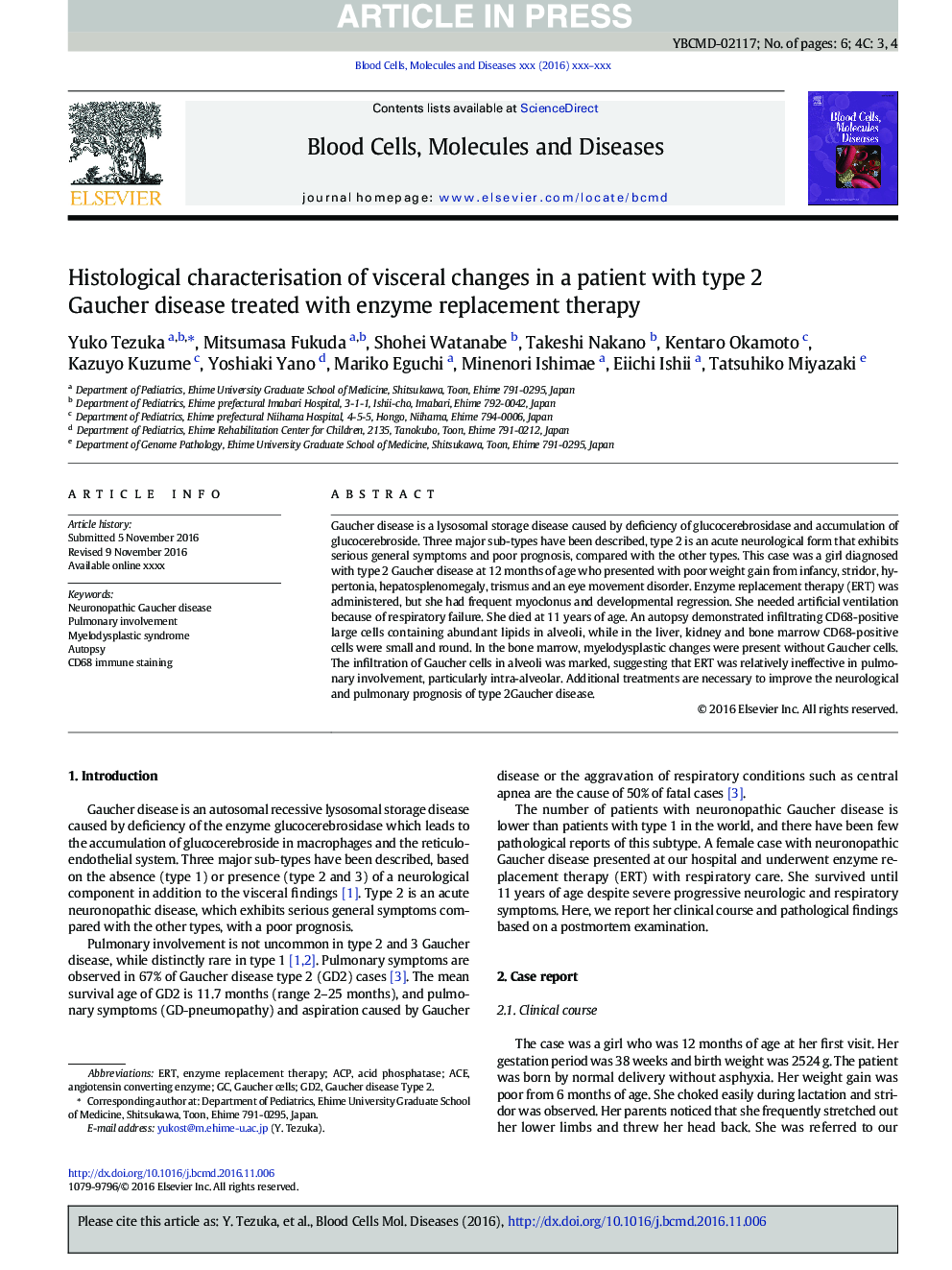| Article ID | Journal | Published Year | Pages | File Type |
|---|---|---|---|---|
| 8648110 | Blood Cells, Molecules, and Diseases | 2018 | 6 Pages |
Abstract
Gaucher disease is a lysosomal storage disease caused by deficiency of glucocerebrosidase and accumulation of glucocerebroside. Three major sub-types have been described, type 2 is an acute neurological form that exhibits serious general symptoms and poor prognosis, compared with the other types. This case was a girl diagnosed with type 2 Gaucher disease at 12Â months of age who presented with poor weight gain from infancy, stridor, hypertonia, hepatosplenomegaly, trismus and an eye movement disorder. Enzyme replacement therapy (ERT) was administered, but she had frequent myoclonus and developmental regression. She needed artificial ventilation because of respiratory failure. She died at 11Â years of age. An autopsy demonstrated infiltrating CD68-positive large cells containing abundant lipids in alveoli, while in the liver, kidney and bone marrow CD68-positive cells were small and round. In the bone marrow, myelodysplastic changes were present without Gaucher cells. The infiltration of Gaucher cells in alveoli was marked, suggesting that ERT was relatively ineffective in pulmonary involvement, particularly intra-alveolar. Additional treatments are necessary to improve the neurological and pulmonary prognosis of type 2Gaucher disease.
Keywords
Related Topics
Life Sciences
Biochemistry, Genetics and Molecular Biology
Molecular Biology
Authors
Yuko Tezuka, Mitsumasa Fukuda, Shohei Watanabe, Takeshi Nakano, Kentaro Okamoto, Kazuyo Kuzume, Yoshiaki Yano, Mariko Eguchi, Minenori Ishimae, Eiichi Ishii, Tatsuhiko Miyazaki,
